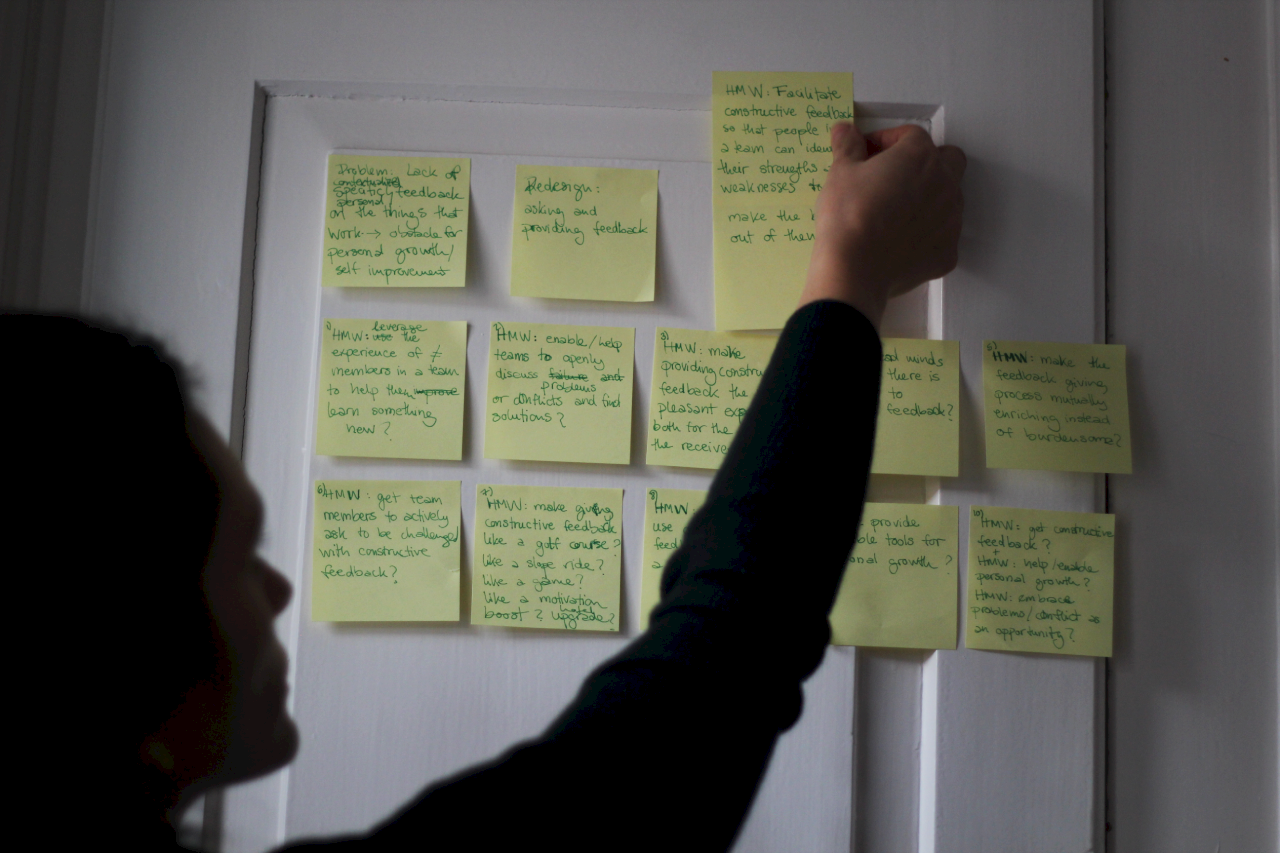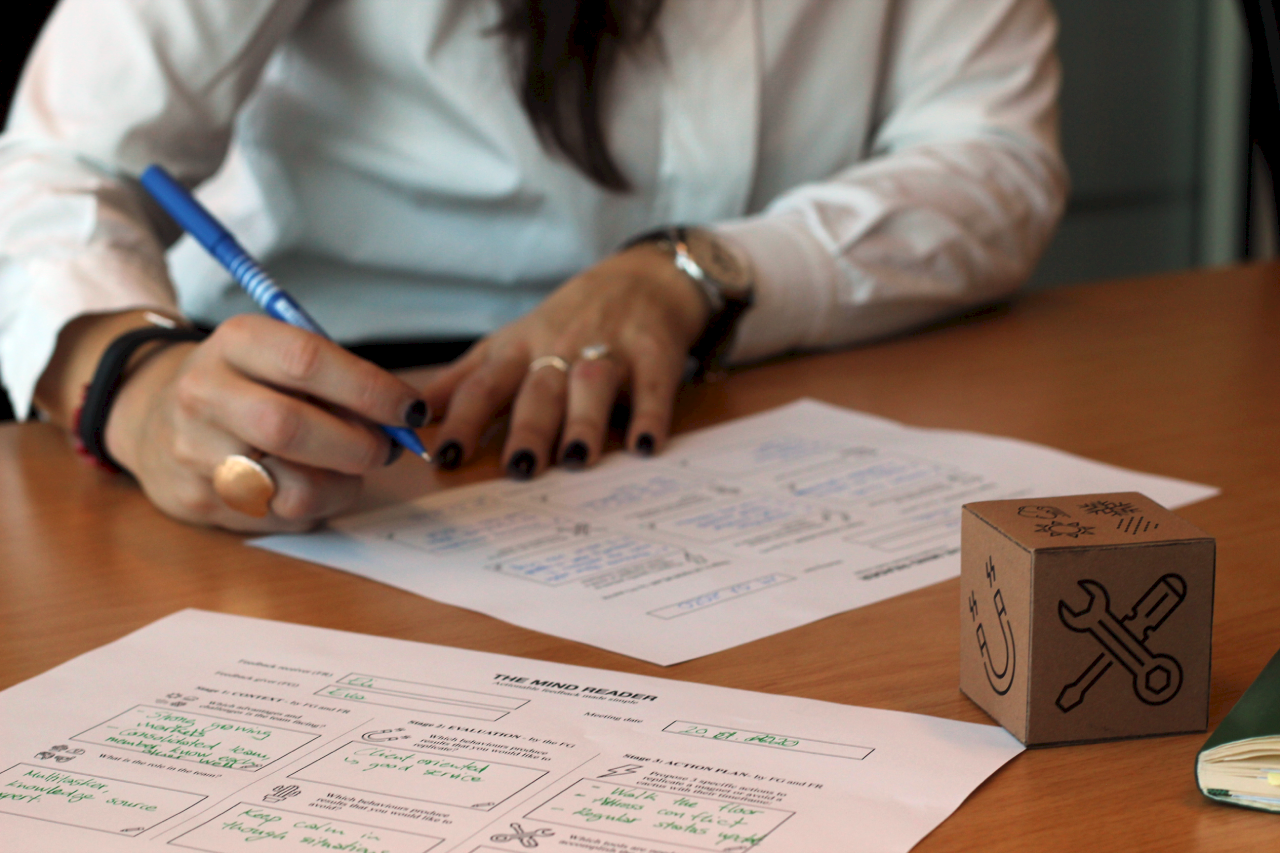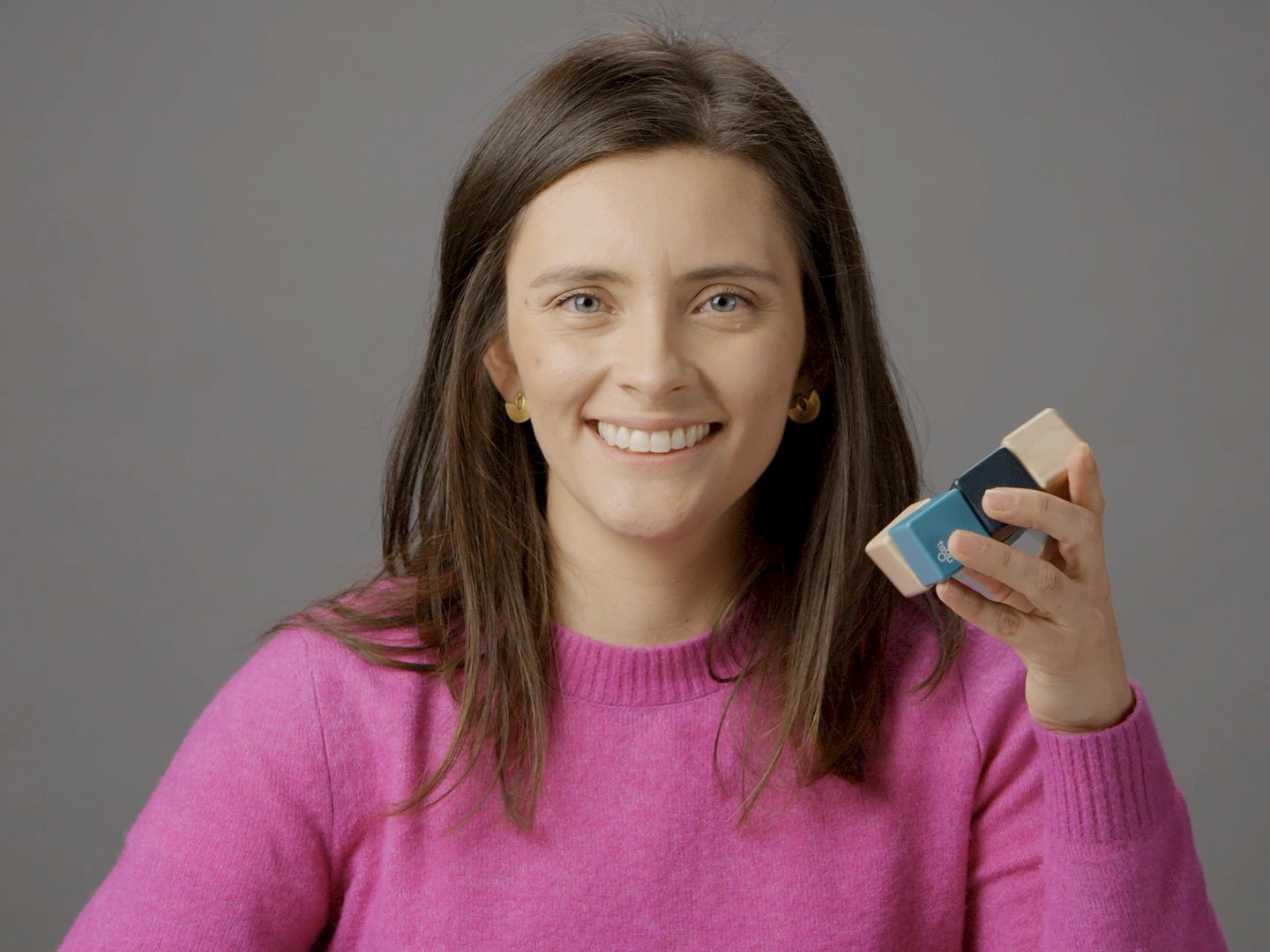Working in a team is rewarding, but it can also be stressful at times. In our fast paced environment, it’s often difficult to slow down and provide feedback. However, feedback is a powerful motivator when given in a personal, specific and actionable way.
The interviews conducted among wealth management professionals, revealed that constructive feedback is desired when it refers to a specific situation. Even if desired, there is a tendency to avoid mentioning areas for improvement by those providing feedback. The interviews also established a positive link between receiving feedback and personal growth.
In this context, would it be possible to improve the feedback experience for both the giver and the receiver?
By defining the team context, the method prepares the ground for the evaluation of the personal strengths and gaps, which are the basis to build an action plan. The ultimate goal is achievable personal growth.
How might we facilitate constructive feedback so that team players can identify their strengths and areas for improvement and make the best out of them?
At the closing of the financial year, firms gather feedback in order to determine the individual performance and the contribution to the firm over the past year. The link of this process to monetary rewards, favours the tendency to select a feedback group based on personal sympathy or to use generic affirmations. The struggle comes when the plan for action is not backed by specific feedback, and focuses solely on numbers. This process happens normally once a year, diluting the potential for personal growth.
With this method, we link feedback with personal development. The aim is to build up the habit of providing and requesting feedback.
In practice, two team players went through the three stages guided by the template in form of a cube. This tangible element represents «the mind reader», which helps the feedback giver to speak their mind.
In the first stage, they defined the team context determined by the role and the external factors. In the cube, the role is represented by different «hats», while the «weather» refers to external factors affecting the team beyond their control that have influence on the behaviour. It’s important that the feedback receiver agrees with the context or adds any missing information. In the beginning, it can be easier for the participants to present their future expectations, rather than to discuss the previous situation. The first time using the method, a moderator can help to steer the conversation.
In the second stage, the feedback giver evaluated the personal strengths and areas for improvement of the receiver. First, the desired behaviours (magnets) that benefit the team, followed by the areas for improvement. They refer to undesired behaviours (cactus) that detract from the team’s success. The strengths normally outnumber the gaps. Still building up the habit is already beneficial for the participants. Working on the context before, helps to separate the behaviour from the person and allows to be more specific about the findings.
The third stage is the action plan. Based on the magnets and the cactus, the feedback giver proposed 3 specific actions to enhance the magnets or address the cactus and a timeframe for each of them. The receiver also expressed their views until they reached an agreement. Once the actions were set, they defined together the tools to facilitate the completion of the action plan.
The participants then exchange roles and start the process again.
After experimenting with the method, both participants found useful to have a structure with defined stages to provide and receive feedback. They would use this tool again in a feedback discussion. In their view, the method emphasises the need for constructive feedback.
The action plan provided a space for the participants to brainstorm. The combination with other methods could have good results.
With time, the frequent use of this method will establish the habit of providing constructive feedback on a regular basis and help keep track of the action plan. The ultimate goal is to help individuals excel in what they do and as a result, to benefit their teams.





